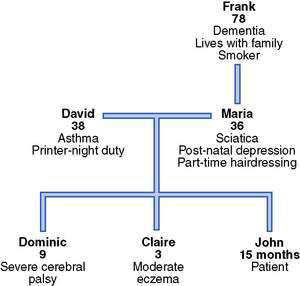2.1 The clinical consultation
• Skills in history-taking and examination cannot be acquired adequately by reading a textbook. Ensure you have lots of practice with children of all ages and in different clinical settings.
• Learn to appreciate what constitutes normal growth, development and physical findings on examination. Take every opportunity you can to observe normal children (who might be visiting the hospital or community health centre, in the cafeteria, or even travelling on public transport). Try to guess their ages from your observations (based on size, development and behaviour) and then ask how old they really are.
• Adapt the content and techniques of history-taking and examination to fit the age of the child and the urgency of the medical problem.
• Learn to be flexible in your approach – some patients will need to be examined on the floor, while in a play area, or from a distance.
Planning your approach
S – subjective: the history as given by the carers and child
O – objective: physical examination and results of investigations
A – assessment: primary diagnosis and differential diagnosis
P – plan: immediate and long-term plan to manage the patient.
Taking the history
The presenting problem
• To obtain the trust of a child, you also need to gain the trust of the parent/s.
• Do not use abbreviations or medical jargon during discussion with the family (say ‘blue’ rather than ‘cyanosed’ and ‘breathing difficulty’ rather than ‘dyspnoea’).
• When the family use descriptions such as ‘wheezing’ or ‘croupy’, make sure that these words mean the same to them as they do to you.




